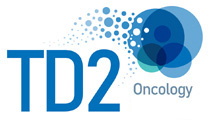Featured Guest Blog: Cardiac Stem Cells by Darcey L. Clark
Not everyone can say that they work on a project that has the potential to benefit millions of patients. But we do.
We work for the UW Medicine Heart Regeneration Program (HRP) within the University of Washington’s Institute for Stem Cell and Regenerative Medicine. HRP scientists have expertise in stem cell biology, cardiovascular medicine, Good Manufacturing Practices (GMP), and clinical trials. The goal of HRP is to develop human cardiomyocytes and use them to repair damaged heart muscle in patients who have experienced heart attacks. This cell therapy approach is being tested in pre-clinical models
The cardiomyocytes are grown under highly regulated (GMP) conditions and monitored throughout this process to be certain they express the right cellular markers. We utilize flow cytometry to measure these markers and ensure successful production runs. The manufacturing process has two phases: the first phase involves the expansion of pluripotent stem cells so that millions of cells can be frozen down into cell banks. These cells banks must pass stringent flow-cytometry criteria to release them into the second phase of manufacturing. For this, we use a validated 4-color flow cytometry panel that monitors cell viability, intra-cellular and cell-surface markers. The development, optimization and validation of the flow panel involved testing many vials of cells, identifying and testing a number of different flow reagents, and transfer of the assay to FCLS, where the qualification and validation flow cytometry studies were completed. All of this took over a year to complete1.
One challenge associated with assay qualification is to identify control cells that do not express the markers that your cells (in this case, the stem cells) express, but do express markers that should be negative on your cells. This is not always easy, and it took us some time to identify the appropriate cells to use for the qualification part of the flow studies. From this perspective “less is more” when designing a flow panel for qualification, since specificity demonstrated with both positive and negative criteria is required for each flow marker.
In the second phase of manufacturing, the pluripotent cells released from the cell banks are expanded and differentiated into cardiomyocytes using a proprietary method developed by HRP scientists. The differentiation process to make mature cardiomyocytes takes 3-4 weeks, although the cells can usually be seen beating between 8-14 days (see video). We will use a 5-color flow cytometry panel to confirm the cells are cardiomyocytes. We are currently in the process of optimizing this flow panel, which is designed to monitor cell viability and intra-cellular markers. Once the assay is optimized in our hands, it will be transferred for qualification and validation. Again, a challenge for the qualification is to identify cells that do not express the cardiomyocyte markers, but do express markers that should not be expressed by cardiomyocytes. So, we are currently exploring several primary cells to use for the qualification assay to demonstrate the specificity of our cardiomyocyte flow panel. Once we identify the right cell line we will begin the transfer of our assay.
After the 5-color cardiomyocyte flow panel is validated, it will be used to characterize the commercially manufactured cardiomyocytes. In addition to stringent flow markers, the cardiomyocytes will have to pass many specifications before they are frozen down into GMP regulated – cell banks. With approval from the FDA, these cardiomyocytes will be used to treat patients in clinical trials, slated to begin at the University of Washington in 2019.
References:
1Chong et al. 2014, Human embryonic-stem-cell-derived Cardiomyocytes regenerate non-human primate hearts, Nature, Vol 510, p273. doi:10.1038/nature 13233

